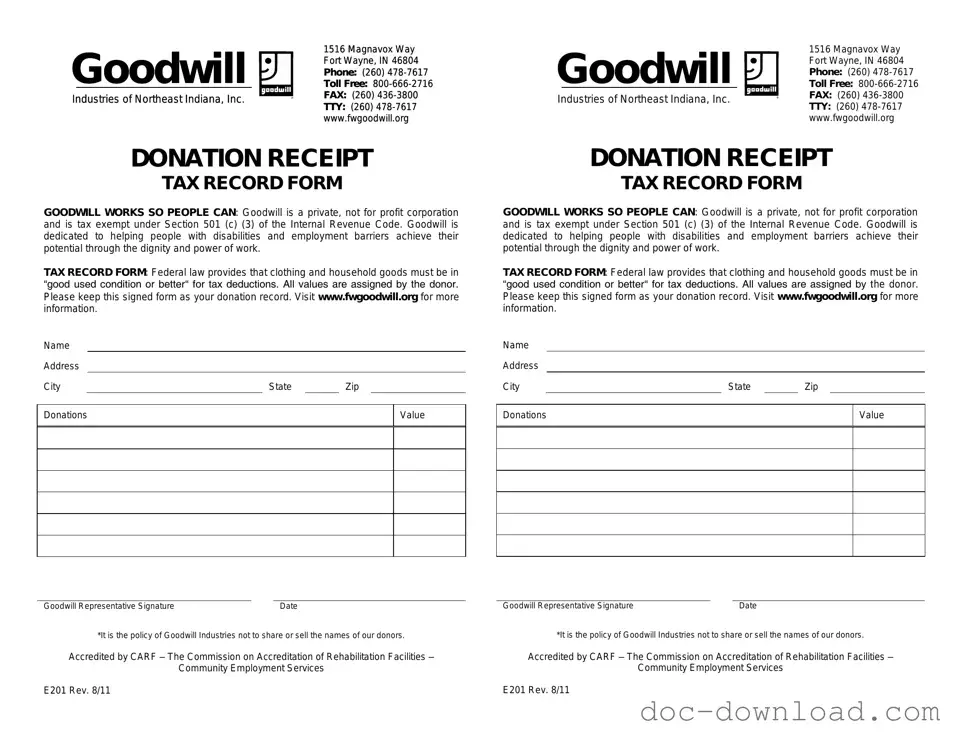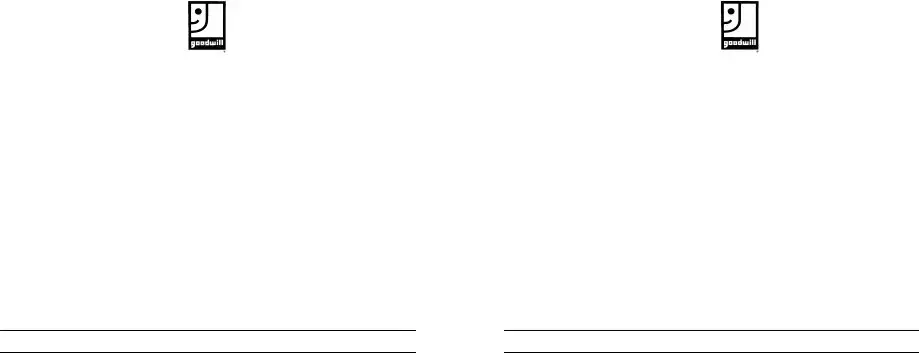The Goodwill donation receipt form shares similarities with the charitable contribution receipt. Both documents serve as proof of a donation made to a nonprofit organization. A charitable contribution receipt typically includes the donor's name, the date of the donation, a description of the donated items, and the organization's information. This document is essential for tax purposes, allowing donors to claim deductions for their contributions. Just like the Goodwill receipt, it verifies that a donation has been made and helps ensure transparency in charitable giving.
Another document that resembles the Goodwill donation receipt is the IRS Form 8283, which is used for noncash charitable contributions. This form is required when the total value of donated items exceeds a certain threshold. Similar to the Goodwill receipt, Form 8283 provides a detailed description of the donated items, their fair market value, and the date of the donation. Both documents are crucial for taxpayers who wish to claim deductions for their donations, ensuring that they comply with IRS regulations.
When it comes to documenting vehicle transactions in Colorado, individuals may also want to consider relevant resources such as the Motor Vehicle Bill of Sale. This essential form captures key transaction details to ensure compliance. For those looking for more templates or forms to assist with various documentation needs, check out Colorado PDF Forms, which offers helpful options to simplify your paperwork.
The donor acknowledgment letter is also akin to the Goodwill donation receipt. Nonprofits often send this letter to donors as a formal thank-you for their contributions. It includes essential details such as the donor's name, the donation amount, and a description of the items donated. Like the Goodwill receipt, this letter serves as documentation for tax purposes, allowing donors to substantiate their charitable contributions when filing their taxes.
Lastly, the donation confirmation email functions similarly to the Goodwill donation receipt. Many organizations send an email to confirm the receipt of a donation. This email typically includes information such as the donor's name, the date of the donation, and a brief description of the items donated. While it may not have the same formal structure as a printed receipt, it still serves as proof of the donation and can be used for tax deduction purposes, just like the Goodwill receipt.

